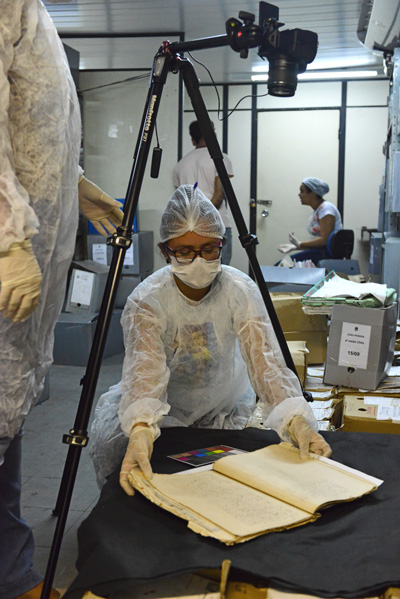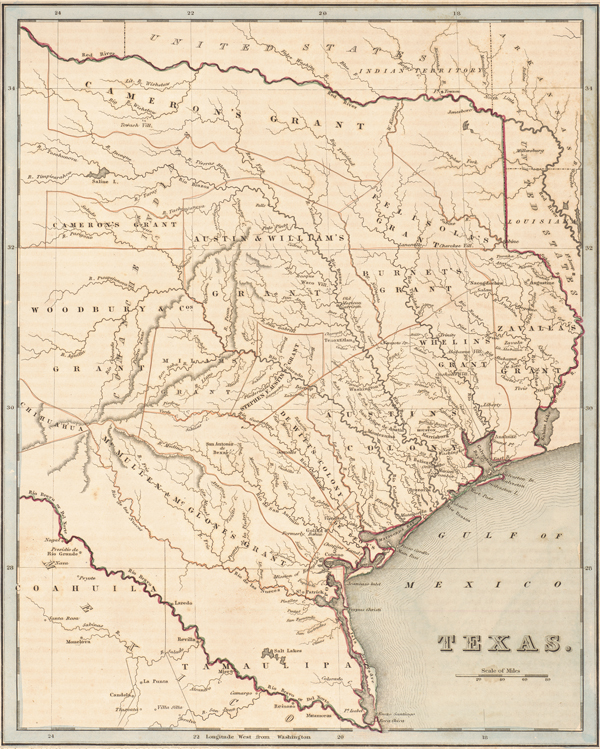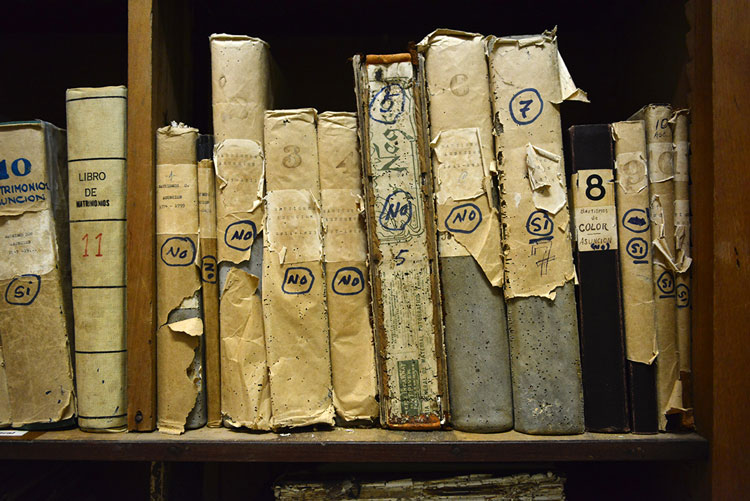w. marvin dulaney has already seen the positive side of embracing digital tools. The history associate professor is working with researchers from Texas Christian University and the University of North Texas to document the oral histories of Texans during the civil rights and labor rights movements starting in the 1950s. The Civil Rights in Black and Brown Interview Database is a free, online repository that will eventually include more than 400 interviews and thousands of keyword-searchable clips. The project is funded by the National Endowment for the Humanities (NEH).
“If you just produce transcripts, a limited number of people are going to look for them,” Dr. Dulaney says. “Whereas if we upload them online, then anyone in the world can have access to them.”
Fellow historian David LaFevor echoes Dulaney’s enthusiasm. The assistant professor has been working for several years on a digital archive of Roman Catholic Church records that document the African slave trade through Latin American countries like Cuba. His work, which recently received a $50,000 grant from the British Library Endangered Archives Programme, not only preserves these fragile documents, but also makes them widely available to researchers and family historians.
“One of the ways we envision the project is as a democratization of historical research,” Dr. LaFevor says. “Having it online has opened it up to more interpretation, to more involvement.”
View the Project
in addition to increasing the reach of UTA scholarship, the Digital Arts and Humanities Initiative aims to spark interdisciplinary collaborations, the kind of work that is encouraged by funding agencies such as the NEH and the National Science Foundation.

David LaFevor is creating a digital archive of Roman Catholic Church records on the slave trade
Laurel Smith Stvan’s project, one of the 11 Digital Arts and Humanities Initiative grant winners, demonstrates the benefits of such an approach. She is leading a multidisciplinary team that includes Jacqueline Fay from the English Department and Sridhar Nerur from the College of Business in using software to compare discussions of health and nutrition from more than 3,000 medieval texts with modern media such as newspapers, blogs, websites, novels, and movies. The results should provide perspectives on how the language of illness and health influences people’s well-being.
Dr. Stvan, who is chair of the Department of Linguistics and TESOL, says linguists have been using digital instruments for several decades to examine large bodies of literature. Now, the technology is better than ever.
“If we want to see larger patterns, patterns across time with different authors using the same words and constructions, then it’s really helpful to let the software aid you,” she explains. “You still have to use your brain to do the interpretation, but it lets you move through a lot more material and see patterns you wouldn’t have caught on your own.”
Assistant Professor Kenton Rambsy is putting digital tools in his students’ hands by teaching them to use text analysis systems such as Voyant. In his class, “The Life and Times of S. Carter,” students investigated rapper Jay Z’s work for recurring words and phrases, geographic markers, and social references. They compared what they found with classic African-American literature.
“One of the ways we envision the project is as a democratization of historical research. Having it online has opened it up to more interpretation, to more involvement.”
“I said, ‘Why not use big data to try to examine some of these things?’” says Dr. Rambsy, who in 2016 served as co-director of an NEH summer institute on digital pedagogy at Howard University. “We can cover so many more writers just by using the data.”
Like others at the forefront of digital humanities research, Rambsy and his students shared their work online in dynamic presentations available worldwide. (Read more about Dr. Rambsy’s class in this Dallas Morning News article).
That element—the sharing of information—is key. As Holmes notes, delivering research and scholarship in a visual, digital platform is essential if UTA wants to connect with today’s information-seekers.
“To ignore that intersection of computer science and the humanities would be to confine something like history or other liberal arts to the classroom,” she says. “We want to push it beyond that. We want to push it to a global community.”
View the Project

















